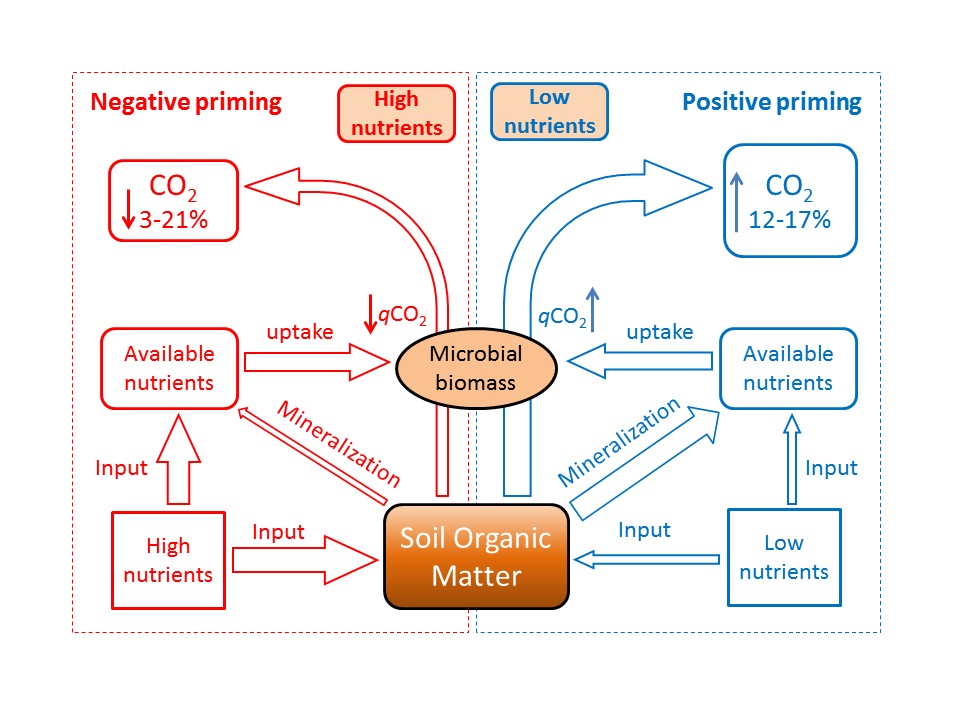Intensive Multiple Nutrient Elements Input Results in Negative Priming Effect of Organic Matter in Paddy Soil
CO2 emission from paddy field plays a crucial role in the global greenhouse gas emission and terrestrial ecosystem C cycle. Paddy ecosystem receives anthropogenic-derived nutrient inputs (N, P, K, Ca, and S) from two different types of CO2 emission known as priming effect (PE).
Increasing CO2 emission is considered as positive priming effect (PPE) and decreasing CO2 emission as negative priming effect (NPE). This is an important part of the agricultural production process and microbial decomposition of soil organic matter (SOM).
According to Meta analysis, most researches focused on the effect of single nutrient element addition on SOC mineralization. In order to make the rational use of the nutrient and understand the microbial soil interaction, multiple nutrients (N, P, K, Ca and S) addition at different concentrations could be scientifically conducive for considering the nutrient cycling and it’s priming effect on flooded paddy soils.
A research team from the Institute of Subtropical Agriculture (ISA) of the Chinese Academy of Sciences used NH4Cl, KH2PO4, and Ca2SO4?2H2O as exogenous nutrient elements (N, P, K, Ca, and S) to figure out the features of organic carbon mineralization and its PE in flooded paddy soil under high and low nutrient concentration.
The researchers exposed that low nutrient addition grew CO2 emission (12-17%) in flooded paddy soil, showing a significant PPE, while high nutrient addition declined CO2 emissions (3-21%), demonstrating a considerable NPE (Fig. 1).
The reason for this phenomenon might be that high nutrient addition reduced soil microbial biomass, microbial metabolism efficiency (qCO2), and net nitrogen mineralization, which could lower the turnover of microbes, resulting in a decrease in soil organic carbon mineralization.
"This study would give a theoretical basis and data support for further understanding of the effects of exogenous nutrient addition on the microbial transformation process of soil organic carbon in subtropical rice field," said Prof. GE Tida in ISA, who is engaged in the study of soil carbon cycling in paddy fields.
This study was supported by the National Key Research and Development program, the National Natural Science Foundation of China and Youth Innovation Team Project of ISA, CAS.
Their findings were published in Applied Soil Ecology.
Contact: GE Tida
E-mail: gtd@isa.ac.cn
Institute of Subtropical Agriculture, Chinese Academy of Sciences

A schematic diagram illustrating the negative (Red) and positive (Blue) priming effects of soil organic matter decomposition caused by low and high levels of nutrient addition to paddy soil. The thickness of the arrows indicates the relative magnitude of each process. (Imaged by ISA)
Download attachments: